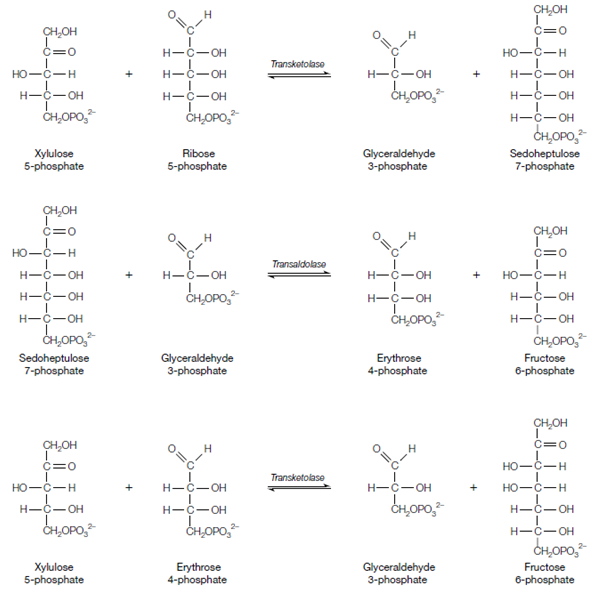Control of the pathway:
The transaldolase and transketolase reactions are reversible so the last products of the pentose phosphate pathway can modify depending on the metabolic requires of the cell. Therefore when the cell required NADPH but not ribose 5-phosphate, the latter is converted to glycolytic midway and enters glycolysis. At the other extreme, when the required for ribose 5-phosphate exceeds in which for NADPH and fructose 6-phosphate and glyceraldehyde 3-phosphate can be taken from glycolysis and converted into ribose 5-phosphate through reversal of the transaldolase and transketolase reactions.

Figure: Details of the transaldolase and transketolase reactions.
The first reaction of the pathway and the oxidation of glucose 6-phosphate through glucose 6-phosphate dehydrogenase, is irreversible and rate limiting. The enzyme is regulated through NADP+. As the cell uses NADPH the concentration of NADP+ increases, stimulating glucose 6-phosphate dehydrogenase and so increasing the rate of the pathway and NADPH reproduction.